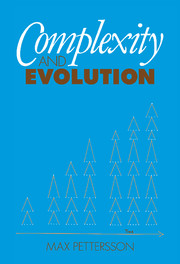Book contents
- Frontmatter
- Contents
- Foreword by Joseph Needham, FRS
- Preface
- Acknowledgements
- 1 Natural and other hierarchies
- 2 Major integrative levels
- 3 Some logarithmic forms of display
- 4 Physical range of integrated natural entities
- 5 Biological range of integrated natural entities (first part)
- 6 Biological range of integrated natural entities (second part)
- 7 Social range of integrated natural entities
- 8 Human societies (first part)
- 9 Human societies (second part)
- 10 Acceleration in evolution
- 11 Further allied accelerations
- 12 Aspects of number
- 13 Aspects of mass
- 14 Positive skewness
- 15 Quantitative conclusions
- Bibliography
- Index
1 - Natural and other hierarchies
Published online by Cambridge University Press: 18 January 2010
- Frontmatter
- Contents
- Foreword by Joseph Needham, FRS
- Preface
- Acknowledgements
- 1 Natural and other hierarchies
- 2 Major integrative levels
- 3 Some logarithmic forms of display
- 4 Physical range of integrated natural entities
- 5 Biological range of integrated natural entities (first part)
- 6 Biological range of integrated natural entities (second part)
- 7 Social range of integrated natural entities
- 8 Human societies (first part)
- 9 Human societies (second part)
- 10 Acceleration in evolution
- 11 Further allied accelerations
- 12 Aspects of number
- 13 Aspects of mass
- 14 Positive skewness
- 15 Quantitative conclusions
- Bibliography
- Index
Summary
Some definitions
One of the definitions which a dictionary gives for the word ‘entity’ is ‘a thing that exists’. A definition of ‘hierarchy’ is ‘a body classified in successively subordinate grades’. This corresponds reasonably well with what follows. The word ‘integer’ means ‘a whole’. An individual mammal is certainly a coherent entity, made up and functioning as a whole. It is an ‘integrated natural entity’, and a good representative of one of the major ‘integrative levels’ which are the primary theme of this book.
A car and a computer are not ‘natural’ but manufactured, or ‘artificial’. In comparison with a heap of scrap metal, a car is certainly an integrated entity; but an integrated artificial entity. A pebble and a planet are each ‘natural’ entities. But compare a pebble with a live mouse, of about the same size. If the pebble is broken in two, the properties of the system do not change greatly. But if a live mouse is cut into halves the properties change catastrophically because the live mouse has such a highly complex and wellintegrated structure, with properties to match. While a mouse can be thought of as an integrated natural entity, pebbles and planets (being rather low-grade aggregations of molecules and ions, etc.) could be regarded as ‘aggregational’ natural entities, a term that will not often need to be used.
Natural hierarchies
It is well known to students of chemistry and physics that molecules consist of atoms, and that atoms consist of fundamental particles.
Information
- Type
- Chapter
- Information
- Complexity and Evolution , pp. 1 - 8Publisher: Cambridge University PressPrint publication year: 1996
